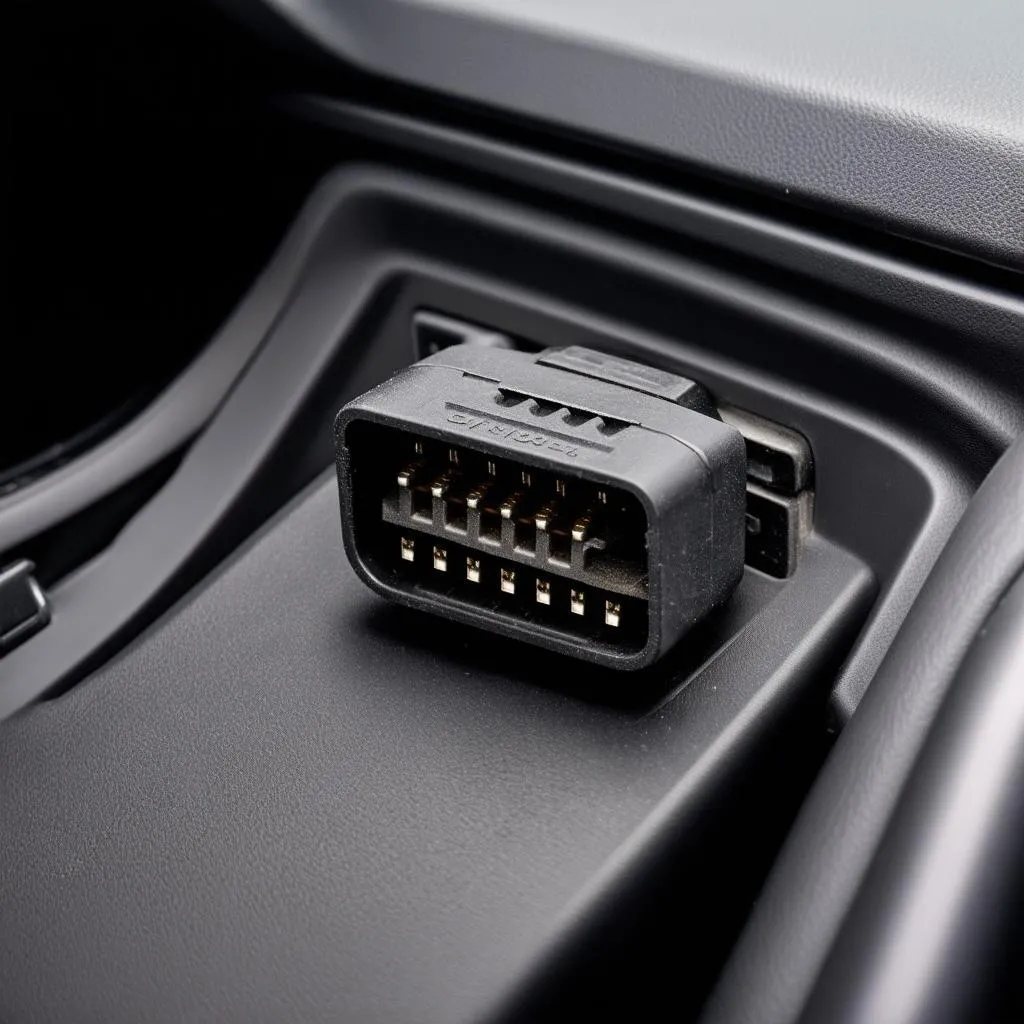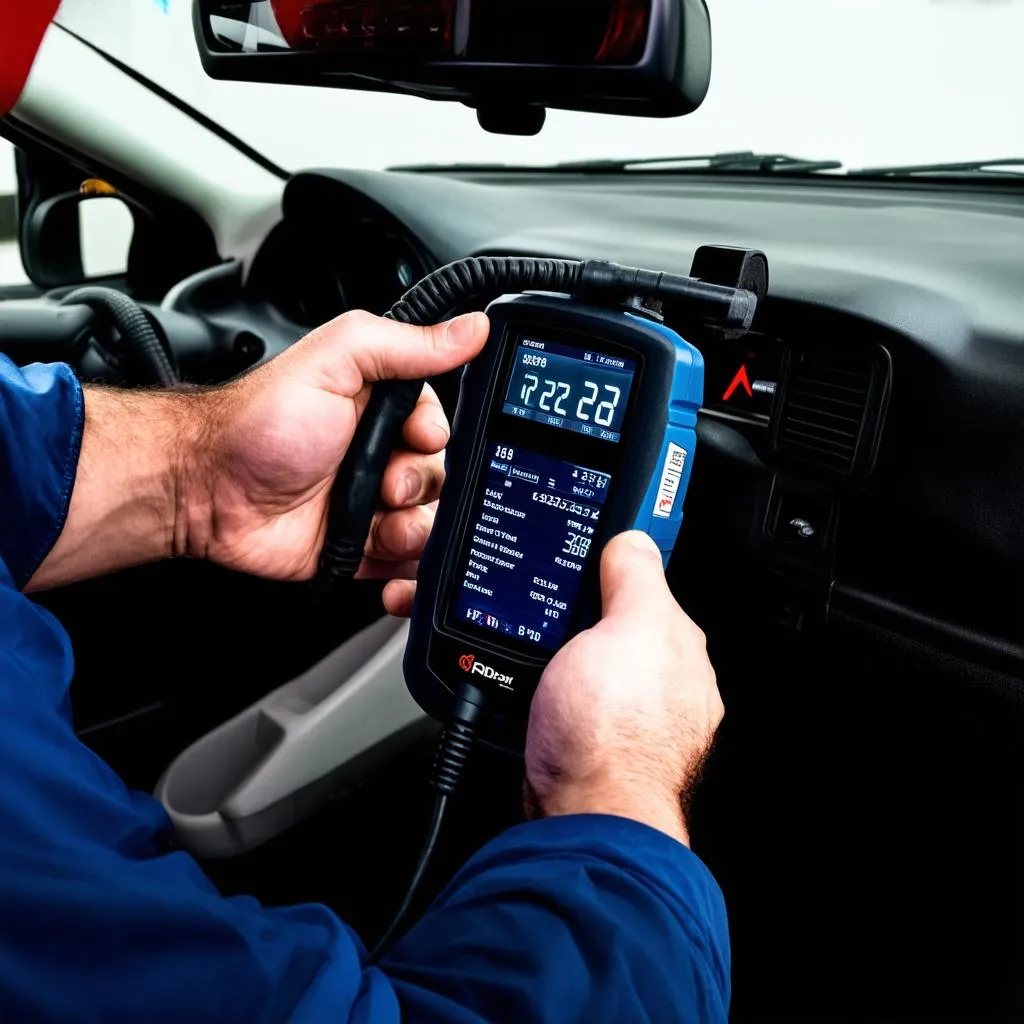Ever felt like your car was speaking in a secret language, especially when that pesky “Check Engine” light flickered on? What if I told you there’s a way to understand what your car is trying to say? Enter the OBD port, a small, often overlooked portal to your car’s inner workings.
The OBD Port: A Window into Your Car’s Soul
Imagine this: you’re driving down a scenic highway when suddenly, your car starts to sputter. Frustrated, you pull over, unsure what to do next. In the past, this scenario often meant a costly trip to the mechanic, hoping for a swift diagnosis. But times have changed.
That little rectangular port tucked away under your dashboard, often labeled “OBD” or “OBD II,” is your direct line to understanding your car’s health. Think of it like your car’s own personal translator, revealing hidden messages about its performance, efficiency, and potential issues.
Deciphering the Code: What Can an OBD Port Tell You?
The beauty of the OBD port lies in its ability to provide a wealth of information, from simple to complex. Here are just a few things it can reveal:
- Engine Performance: The OBD port can tell you how well your engine is running, including data on RPMs, fuel efficiency, and even ignition timing.
- Emissions Control: Ever wonder about your car’s environmental impact? The OBD port monitors your car’s emissions system, ensuring it’s running cleanly and efficiently.
- Sensor Data: Your car is a complex network of sensors, and the OBD port acts as the central hub, relaying information about everything from your tire pressure to your coolant temperature.
- Troubleshooting: Perhaps the most valuable aspect of the OBD port is its ability to pinpoint problems. Whether it’s a faulty sensor, a misfiring spark plug, or a more serious engine issue, the OBD port can help you (or your mechanic) quickly identify the culprit.
 OBD port location
OBD port location
Unlocking the Power of the OBD Port: Tools of the Trade
Accessing the wealth of information stored within your car’s OBD port requires the right tools. Here are a few options to consider:
- Basic Code Readers: These affordable devices plug into your OBD port and can read and clear basic engine codes, such as the dreaded “Check Engine” light.
- Advanced Scan Tools: For more in-depth analysis, advanced scan tools offer a wider range of features, including live data streaming, sensor testing, and even the ability to program certain car modules.
- Smartphone Apps: Believe it or not, there are now numerous smartphone apps that can connect to your OBD port via a Bluetooth adapter, providing a convenient and portable diagnostic solution.
 Mechanic using OBD scanner
Mechanic using OBD scanner
Beyond the Technical: A Holistic Perspective on Your Car
While the OBD port is undoubtedly a powerful tool, it’s important to remember that your car is more than just a collection of sensors and codes. Regular maintenance, mindful driving habits, and a touch of intuition can go a long way in ensuring your car’s longevity and your peace of mind.
Just as a doctor uses a stethoscope to listen to your heartbeat, the OBD port allows us to hear the whispers of our vehicles. By understanding its language, we can build a deeper connection with our cars, ensuring they continue to serve us faithfully on life’s many journeys.
Need Help Deciphering Your Car’s Code?
If you’re feeling overwhelmed or unsure about how to use an OBD reader, don’t worry, you’re not alone! Many people find the technical aspects daunting. That’s where we come in.
At Techcarusa.com, we’re passionate about helping car owners understand their vehicles. Whether you need help choosing the right diagnostic tool, interpreting error codes, or simply want some expert advice, our team of automotive specialists is here to help.
Contact us on WhatsApp at +84767531508 for personalized support and guidance on all things OBD and car diagnostics.
Don’t let your car’s secrets remain hidden. Unlock the power of the OBD port and embark on a journey of automotive enlightenment!